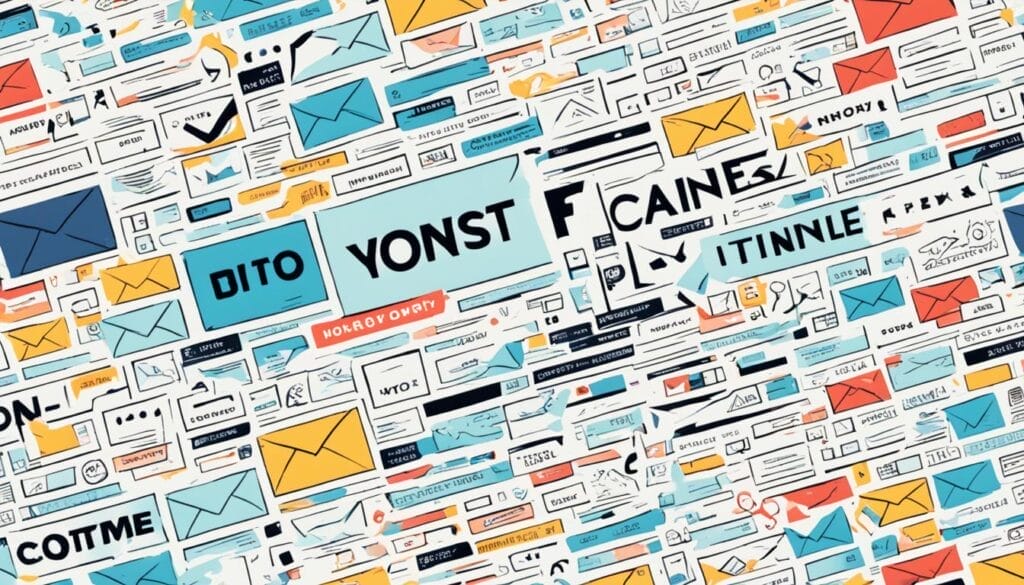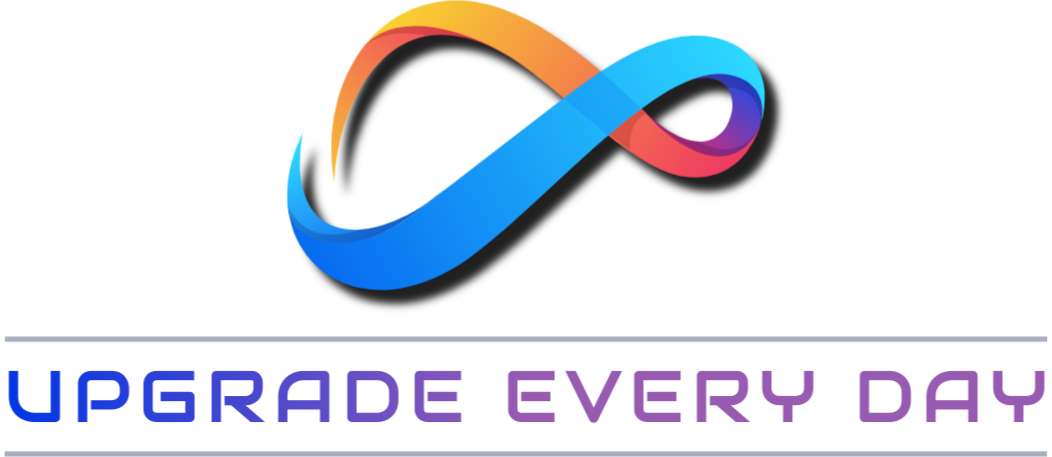Did you know that the average office worker gets about 121 emails every day?
This means lots of mail trying to get noticed in a busy inbox. So, how do you make your emails special? The solution is mastering email frequency optimisation.
Key Takeaways
- Create a quality email list by collecting addresses from interested individuals.
- Avoid purchasing email lists as they often lead to low engagement.
- Segment your audience based on demographics, interests, and engagement level.
- Personalise your emails using data such as purchase history and browsing behaviour.
- Craft compelling subject lines that are concise, clear, and arouse curiosity or urgency.
Build a Quality Email List
Creating a great email list is key for effective email marketing. To make sure your list grows, focus on getting emails from people who really like what you offer. This will make sure your emails are seen by an audience who’s eager to read, click, and act on them.
One way to get more emails is to use opt-in forms on your site, social media, and elsewhere. These forms let visitors sign up to hear from you, showing they want your updates. If you give them something they value, like special content or discounts, they’re more likely to join your list.
Buying email lists might seem like a quick win, but it’s a bad idea. These lists often have emails from people who didn’t agree to hear from you. Chances are, they’ll either ignore you, mark your emails as spam, or unsubscribe. This can hurt how well your emails do overall.
To keep your email list strong and your reputation good, grow it the right way. This means getting emails from people who want to hear from you. By using opt-in forms and other honest ways, you aim for a list full of folks genuinely keen on what you have to say.
Segment Your Audience
Segmenting your email audience changes the game. It’s about sending emails that really connect. By knowing your audience’s details, like their interests or what they buy, you can send emails they’ll love. This makes people more likely to open your emails, click on links, and buy your products.
Now, you might ask, how do you do this well?
Let me guide you through it:
1. Collect Data:
Start by getting to know your subscribers. Find out things about them like their age, where they are, or what they like. You can also learn about their hobbies or what they look at from your content.
2. Analyse and Define Segments:
After gathering this info, look for patterns. You might see that some subscribers are into fitness, while others love DIY. These become your segments.
3. Tailor Content for Each Segment:
Next, start making special content for each group. From email messages to the images you use, make it all about what they like.
4. Test and Refine:
Always keep testing and improving your approach. Watch how they respond to your emails. This feedback helps you get better and better at what you do.
Segmenting your audience lets you get personal. This leads to better engagement and more sales. So, get started on segmenting your emails today, and see the great results it brings.

Personalise Your Emails
Personalisation is crucial in email marketing. It’s more than just using someone’s first name. You should use data like what they’ve bought and looked at to make emails that really speak to them.
Looking at what someone has bought helps a lot. You can suggest products they might like. This makes their time with you better and makes it more likely they’ll buy something.
If you know what they’ve looked at, you can give them similar options. If they’ve shown an interest in something on your site, send them an email with more of the same. This shows you get them and what they like, which makes them more likely to engage.
By sending emails that really suit them, you make people feel special. They feel like you know them, which makes them more loyal. They’ll open your emails more and act on them too.
Use tools that let you do this at scale. They make sending personal emails to everyone possible. This saves time and makes your emails more relevant.
Case Study: The Power of Personalised Recommendations
“We used personalised recommendations in our emails and saw amazing results. Our open and click rates shot up, and we sold a lot more. We used what people had bought before and what they’d looked at to suggest personalised products. This made buying from us feel special. It also meant more people did buy. Our emails worked better than ever.” – Jane Williams, Marketing Manager
Using data to personalise your emails works. By suggesting items based on what they’ve already shown an interest in, you make the experience better. This can lead to more sales and a stronger bond with your customers.
So, consider the right tools to personalise your emails and boost your marketing success.
Craft Compelling Subject Lines
The subject line in email marketing is vital for success. It is the first part of your email people see. So, it must be captivating to make them open the email. With the right approach, you can make subject lines that are clear, short, and effective.
Keep it Concise and Clear
Long subject lines can be off-putting. It’s better to keep them short and to the point. Always make sure the subject line reflects what’s inside the email. This way, you won’t lose subscribers.
Inject Curiosity and Urgency
To keep your subscribers interested, make them curious. Ask a question or show a hint of what’s inside. Adding a little urgency can also push people to open the email right away.
“Discover the Secrets to Unlocking Your Full Potential”
Personalise for Connection
Using someone’s name can make emails much more personal. It shows you know them. Offering products based on what they like builds a connection. This makes them more likely to open and click on the email.
Use their name or suggest products they might like based on what they’ve looked at on your site:
“Sara, Exclusive Offer Just for You! Don’t Miss Out!”
Experiment with A/B Testing
A/B testing helps you understand what your audience prefers. Try different subject line styles to see what works. Use what you learn to make your subject lines even better over time.
Example Subject Lines:
Here are some examples to show how to put these strategies to use:
- “Last chance to grab your 20% off coupon!”
- “Unlock the secrets to successful weight loss”
- “Hey [Subscriber Name], we’ve got something special for you!”

These tips can increase the success of your email campaigns. Always test and analyse your subject lines. Keep improving them to keep your subscribers interested.
Summing Up Email Frequency Optimisation
Mastering how often you send emails is key in email marketing. By using the advice in this article, you’ll boost how many people engage and buy from your emails.
Start by getting a good email list and knowing who your audience is. Then, make your emails personal and have great subject lines. Also, send content that your readers will find very useful.
Don’t forget about mobile users. Think about the best times to send your emails. And always check how well your emails do to get better.
Email marketing needs regular updates. Keep learning from your campaigns and find what your audience likes. This way, you’ll see great results in your marketing.
FAQ
What is email frequency optimisation?
Email frequency optimisation is about finding the perfect number of emails. It aims to keep your readers engaged and bring more sales. This is done without making them tired of your emails.
How often should I send emails?
The best sending frequency varies for each audience and field. Try different numbers to find what your readers prefer. Starting with a steady plan, like sending emails weekly or monthly, is a good idea.
Then, listen to what your readers say and look at how they interact with your emails.
How do I build a quality email list?
To have a good email list, gather emails from those who really want to hear from you. This can be done with sign-up forms on your site, social media, or at events. But, don’t buy email lists. They don’t usually work well and can even harm how your emails are seen.
Why is audience segmentation important in email marketing?
Dividing your email list into smaller groups helps to send more relevant emails. This boosts how interesting and useful your emails are to your readers. In turn, this can increase how many people open and click on your emails.
How can I personalise my emails?
Personalising emails isn’t just about using people’s names. You can use what you know about their past purchases or interests to suggest new products. This makes your emails more useful and interesting to them. It can help you build a stronger relationship with your readers and make your emails more effective.
What makes a subject line compelling?
An interesting subject line is short, clear, and makes the reader want to open the email. Try different things to see what makes people more curious or interested. Testing different subject lines can help you get better over time at catching your readers’ attention.





